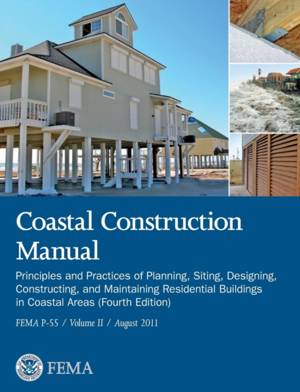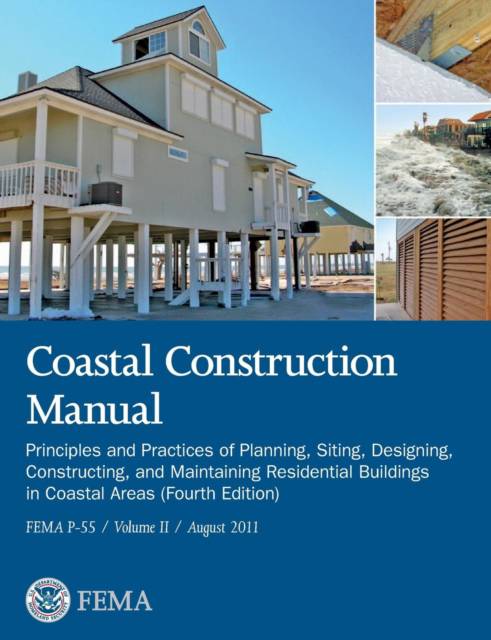
Door een staking bij bpost kan je online bestelling op dit moment iets langer onderweg zijn dan voorzien. Dringend iets nodig? Onze winkels ontvangen jou met open armen!
- Afhalen na 1 uur in een winkel met voorraad
- Gratis thuislevering in België vanaf € 30
- Ruim aanbod met 7 miljoen producten
Door een staking bij bpost kan je online bestelling op dit moment iets langer onderweg zijn dan voorzien. Dringend iets nodig? Onze winkels ontvangen jou met open armen!
- Afhalen na 1 uur in een winkel met voorraad
- Gratis thuislevering in België vanaf € 30
- Ruim aanbod met 7 miljoen producten
Zoeken
Coastal Construction Manual Volume 2
Principles and Practices of Planning, Siting, Designing, Constructing, and Maintaining Residential Buildings in
Federal Emergency Management Agency, U S Department of Homeland Security
Paperback | Engels
€ 54,95
+ 109 punten
Omschrijving
With full color photographs and illustrations, The 2011 Coastal Construction Manual, Fourth Edition (FEMA P-55), is a two-volume publication that provides a comprehensive approach to planning, siting, designing, constructing, and maintaining homes in the coastal environment. The primary audience for this book (Volume II) is the design professional who is familiar with building codes and standards and has a basic understanding of engineering principles. Volume II is not a standalone reference for designing homes in the coastal environment. The designer should have access to and be familiar with the building codes and standards that are discussed in Volume II and listed in the reference section at the end of each chapter. The designer should also have access to the building codes and standards that have been adopted by the local jurisdiction if they diԀer from the standards and codes that are cited in Volume II. If the local jurisdiction having authority has not adopted a building code, the most recent code should be used. Engineering judgment is sometimes necessary, but designers should not make decisions that will result in a design that does not meet locally adopted building codes.
Specificaties
Betrokkenen
- Auteur(s):
- Uitgeverij:
Inhoud
- Aantal bladzijden:
- 408
- Taal:
- Engels
Eigenschappen
- Productcode (EAN):
- 9781782665281
- Verschijningsdatum:
- 1/11/2013
- Uitvoering:
- Paperback
- Formaat:
- Trade paperback (VS)
- Afmetingen:
- 189 mm x 246 mm
- Gewicht:
- 725 g

Alleen bij Standaard Boekhandel
+ 109 punten op je klantenkaart van Standaard Boekhandel
Beoordelingen
We publiceren alleen reviews die voldoen aan de voorwaarden voor reviews. Bekijk onze voorwaarden voor reviews.











